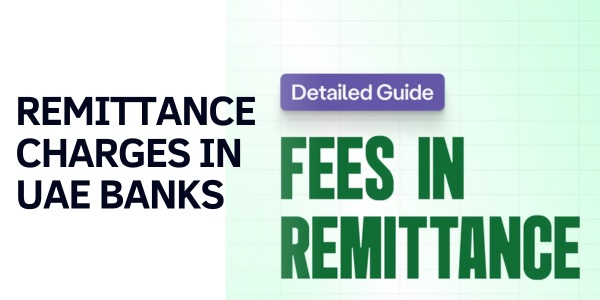
Remittance Charges in UAE Banks
Understanding Remittance Charges in UAE Banks: A Comprehensive Guide
Sending money abroad from the UAE is a common practice, whether for personal support, business transactions, or investments. However, understanding remittance charges in UAE banks can be complex. This guide breaks down the process, costs, and alternatives to ensure you make informed decisions.
1. What Are Remittance Charges?
Remittance charges refer to the fees banks impose when sending money internationally. These fees can vary significantly depending on the bank, the destination country, and the amount being sent.
Related Terms:
- Transfer fees
- Exchange rates
- Service charges
2. Factors Influencing Remittance Charges
Several factors affect the remittance charges in UAE banks:
A. Bank Policies
Each bank has its own fee structure. It’s essential to check with your bank for specific charges.
B. Destination Country
Charges can differ based on the recipient’s country. For example, sending money to India may incur different fees compared to sending to the Philippines.
C. Amount Being Sent
Higher amounts may incur higher fees or different percentage-based charges.
D. Payment Method
Using credit/debit cards or bank transfers may result in varying fees.
3. Average Remittance Charges in UAE Banks
Typically, remittance charges in UAE banks range from AED 10 to AED 200. Banks also offer competitive exchange rates, which can affect the total cost of sending money.
Common Banks and Their Charges:
- Emirates NBD: Fees vary from AED 10 to AED 30 for online transfers.
- FAB (First Abu Dhabi Bank): Charges range from AED 15 to AED 50.
- ADCB: Known for competitive rates with fees starting at AED 25.
For the most current rates, visit the banks’ official websites: Emirates NBD, FAB, ADCB.
4. Tips to Minimize Remittance Charges
A. Compare Banks
Always compare remittance fees across different banks. Use comparison websites or financial services to find the best rates.
B. Use Online Services
Consider online money transfer services like Wise or TransferWise, which often have lower fees compared to traditional banks.
C. Check Exchange Rates
Look beyond the fees; sometimes banks offer better exchange rates that can save you money overall.
D. Consider Transfers in Bulk
If possible, sending money in larger amounts less frequently can sometimes reduce the overall cost.
5. Alternatives to Traditional Bank Transfers
If the charges from banks seem high, consider these alternatives:
A. Money Transfer Services
Companies like Western Union and MoneyGram often provide competitive rates and faster transfer times.
B. Digital Wallets
Platforms like PayPal, Skrill, and Revolut can offer seamless international transfers with varying fee structures.
C. Cryptocurrency
For tech-savvy users, cryptocurrencies can provide low-cost alternatives, although they come with their own risks.
6. Conclusion
Understanding remittance charges in UAE banks is crucial for anyone looking to send money abroad. By researching your options and being aware of the fees, you can save money and make more efficient transactions.




